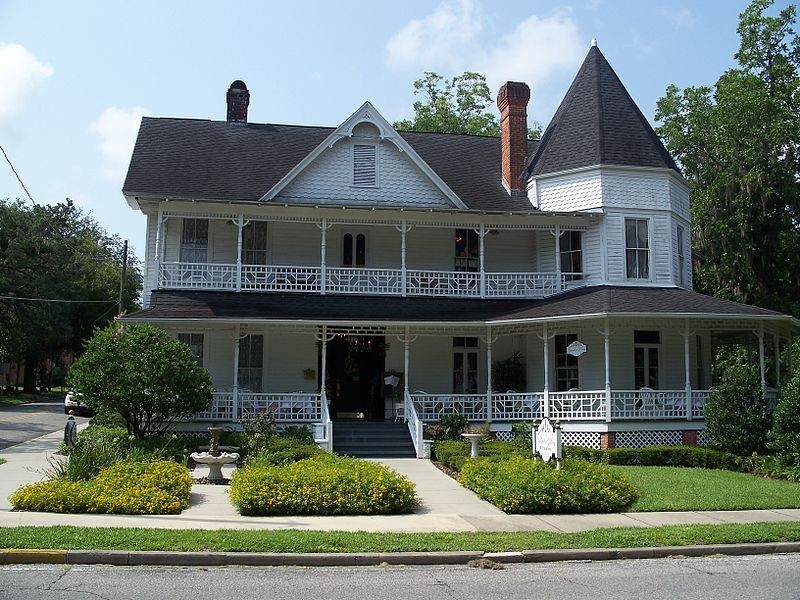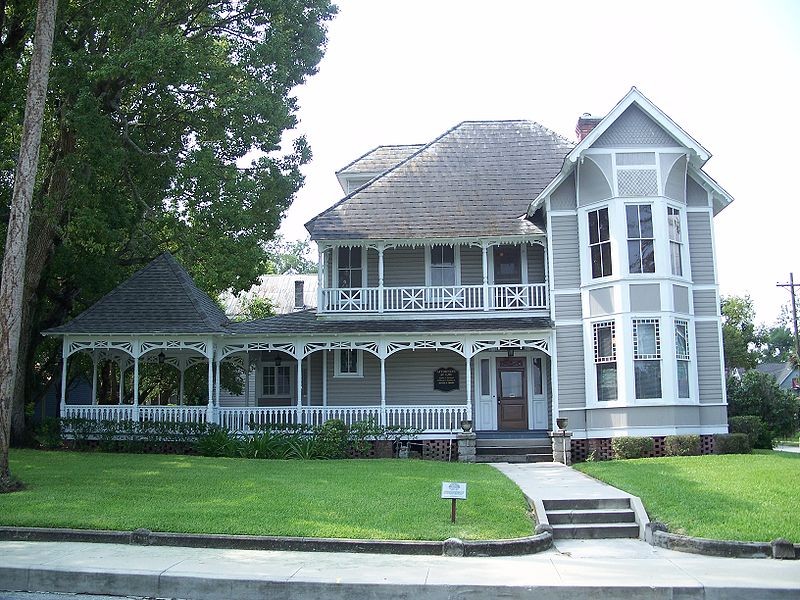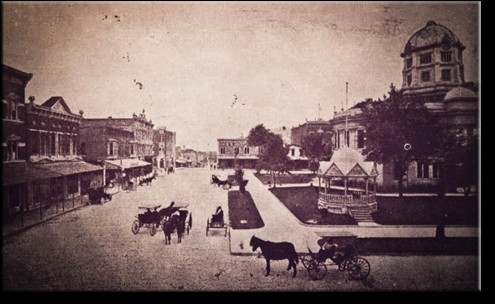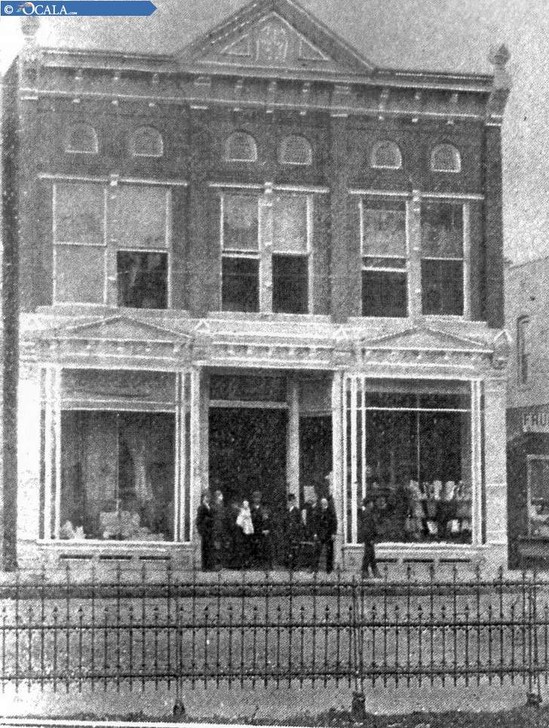Ocala Historic District
Introduction
Text-to-speech Audio
Images
Western entrance to the Ocala Historic District

Dunn House

Bullock House

View of Downtown Ocala

A Rheinauer Store

Backstory and Context
Text-to-speech Audio
History of the Ocala District
The modern city of Ocala was officially established in 1849, developed around the old Fort King site, which had been a prominent buffer between white settlers and the Seminoles, as well as serving in the Second Seminole War and standing as the first courthouse of Marion County in 1844. The Fort King Road was an essential connection between the fort, a supply port at Silver Springs, and the small village of Ocala. Up until 1850, Ocala remained quite small, and the village included a courthouse, a church, a jail, around 10 houses, and a few stores. Following the Civil War, the next few decades were marked by exuberant economic growth. For example, an 1870 illustrated account of a trip to Silver Springs launched a steady tourism industry.
The increased growth, economic prowess, and tourism all played some role in the initial development of the Ocala District. Nonetheless, it was the arrival of the railroad, the success of citrus groves, and the discovery of phosphate that truly marked the beginning of this grand development. Along with the re-construction of town center after the Fire of 1883,
The end of the 19th century was branded with remarkable commercial, agricultural, and industrial expansion in Ocala. This expansion included banks, an iron foundry, carriage manufacturers, planing mills, cigar factories, lime industries, mercantile houses, and hotels. Also, nearly one-third of oranges shipped to northern markets came from the Ocala area, and the Dunnellon Company and the Bradley Fertilizer Company owned more than 90,000 acres of prime phosphate land. Residential housing was covered by an abundance of trees and native flora, while residents planted orange trees throughout the city with great enthusiasm.
These trends prevailed into the 20th century, with continued residential growth as well as services for the city’s residents.1
